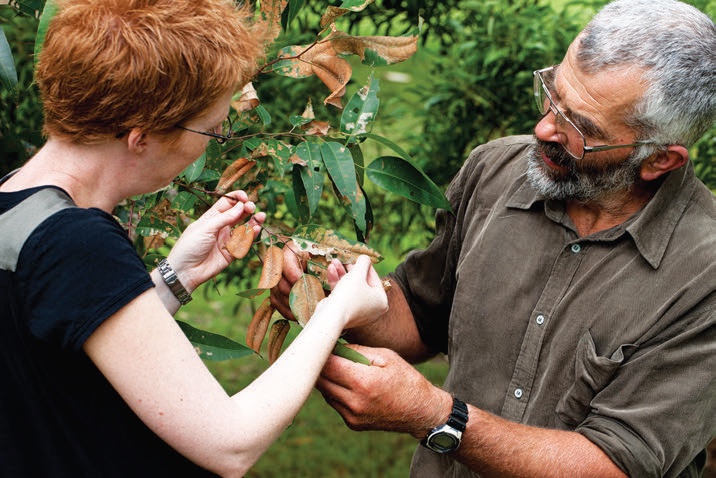Wasp released to control gumleaf skeletoniser
Lisa Berndt, New Zealand Tree Grower May 2011.
A tiny wasp could be a giant ally for eucalypt growers as the prickly pest gumleaf skeletoniser Uraba lugens makes its way towards New Zealand plantations. The newly introduced wasp Cotesia urabae was identified by Scion as the most suitable biological control agent for an insect that poses a serious threat to eucalypt plantations.
A killer on the loose
The gumleaf skeletoniser is an Australian moth whose caterpillars favour eucalypt species. This insect is so named because young caterpillars skeletonise gum leaves by eating the green parts of the leaves, avoiding the veins, which results in a skeleton appearance to the leaf.
Repeated defoliation by the insect can slow a tree’s growth, or even kill it. A recent outbreak of gumleaf skeletoniser in Western Australia has resulted in thousands of hectares of eucalypt forest being defoliated. This outbreak serves as a timely reminder of the damage gumleaf skeletoniser can cause.

The unwelcome pest was discovered in Auckland in 2001 and was too far spread for eradication to be feasible. Since then, large shade trees have suffered and died throughout Auckland city. To make matters worse, the gumleaf skeletoniser is also hazardous to people. The long hairs of the caterpillar inject venom into human skin on contact, which can cause a painful skin irritation. Auckland Council has been controlling the pest with expensive treatments such as injecting trees and removing infested foliage.
While this approach has been effective at protecting sensitive public areas, it has not slowed the march of the caterpillars. Gumleaf skeletoniser is now widespread in the Auckland region, and has arrived in the Waikato, Coromandel and Bay of Plenty. It has recently been found in Nelson, the first record of this pest in the South Island, and is likely to continue spreading.
Although it has not reached any eucalypt plantations yet, it is only a matter of time. For this reason, Scion and forest growers were keen to find a sustainable method of managing the pest.
Adapted to succeed
The parasitic wasp Cotesia urabae was chosen as the most suitable biological control agent because it specifically targets the gumleaf skeletoniser, laying its eggs inside the caterpillar’s body. It has evolved alongside gumleaf skeletoniser for millions of years so is adapted to prey solely on this insect.
The wasp was brought from Tasmania, so is adapted to a climate similar to New Zealand. Host range testing found that it poses no significant risk to native species in New Zealand.
The Cotesia wasp was released by Scion in January 2011, first in Auckland Domain followed by other sites around the city. The wasps were quick to recognise their age-old prey and instantly zeroed in.The caterpillars were no easy target, rearing up and thrashing their heads to fend off the attack.
Effective and safe

The introduction of this new predator will hopefully slow down the spread of gumleaf skeletoniser. Biological control has been a very effective and safe means of managing other eucalypt pests in New Zealand. When successful, it provides a sustainable alternative to applying chemical insecticides. While the wasp is a deadly threat to caterpillars, it will not bother humans. It is so tiny that most people will never see it and it will not sting as some other wasps do.
Following the release of Cotesia urabae in Auckland, Scion will continue to distribute the wasp in areas infested with gumleaf skeletoniser. The success of the release and its effects will be closely monitored.
Dr Lisa Berndt works for Scion

 Farm Forestry New Zealand
Farm Forestry New Zealand